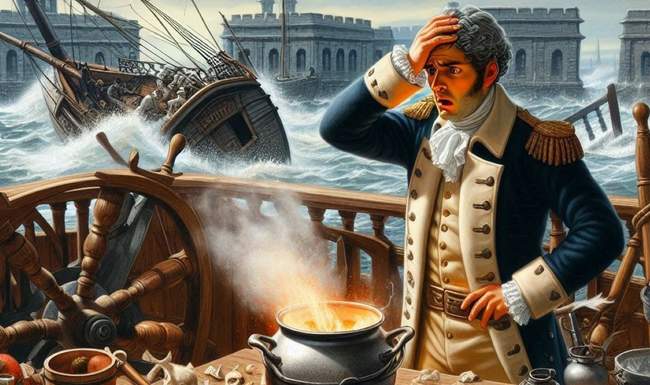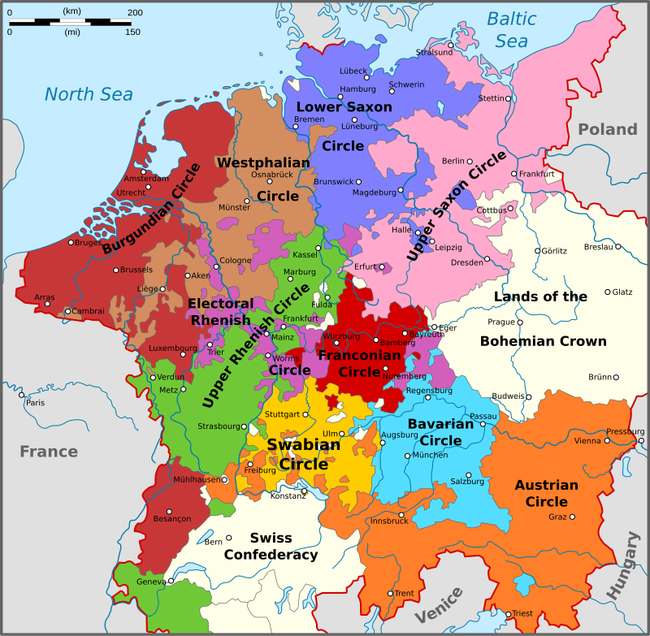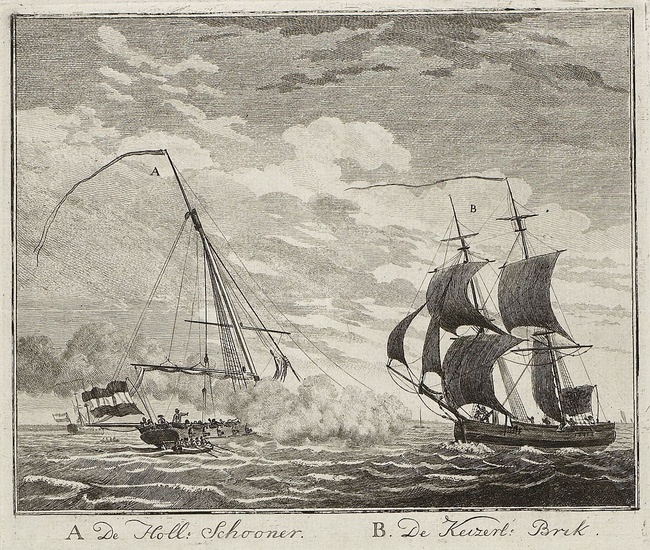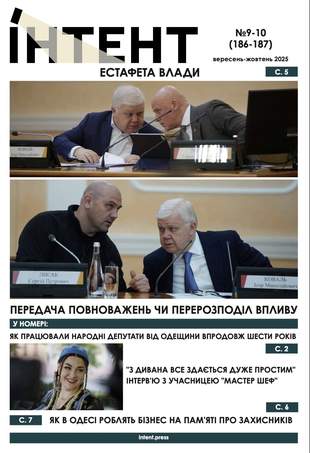Меню
Social networks
Sections
Nov. 18, 2024, 10:22 p.m.
When soup is more important than guns: the story of one shot
Цей матеріал також доступний українською163

Image generated by AI
There have been many curious conflicts in human history. One of them occurred at the end of the eighteenth century, when the economic interests of the Holy Roman Empire and the Republic of the United Provinces clashed. During the war, only one not very successful cannon shot was fired, which had a significant impact on the development of events. We will discuss how the so-called Boiler War developed in the next article.
How the Netherlands was formed
How to exploit the enemy's weakness
How the Netherlands was formed
The term "Netherlands" historically refers to the lands in the lower reaches and deltas of the Western European rivers Rhine, Scheldt, and Maas. The word "Netherlands" means "lower lands" in Dutch. The historical region of the Netherlands roughly corresponds to the territory of three modern countries - the Netherlands, Belgium, and Luxembourg. In the first half of the 16th century, the historical region of the Netherlands belonged to the Holy Roman Empire, and in 1549 it became a Spanish territory.

The Holy Roman Empire in the early 16th century. Map: Wikipedia
However, in the second half of the sixteenth century, a revolution broke out in what is now the Netherlands. The new country, the Republic of the United Provinces, was first proclaimed in 1581 and later officially recognized by European countries during the conclusion of the Peace of Westphalia in 1648. The rest of the historical area remained part of Spain and was called the Southern Netherlands. However, in 1714, the Southern Netherlands came under the control of the Holy Roman Empire again.
The Republic of the United Provinces flourished in the seventeenth century through colonization and trade, with Amsterdam as its center. It is important to note that Amsterdam displaced Antwerp, which, together with Ghent, was the key city of the Southern Netherlands, as the trading center of Europe. It should be noted that the economic pressure on the cities of modern Belgium was targeted. The fact is that both Ghent and Antwerp are located on the Scheldt River, which flows into the North Sea. For effective trade, both cities must have free access to the sea, but the mouth of the Scheldt was controlled by the Republic of the United Provinces. In 1585, the Republic blocked the passage through the Scheldt. Later, the Peace of Westphalia officially recognized the right of the Republic to block the movement of ships on the river.
How to exploit the enemy's weakness
In the eighteenth century, the Republic of the United Provinces gradually stopped fighting for world hegemony and became a junior partner of the British Empire, with which it established friendly relations. Therefore, the British were confident that the Republic of the United Provinces would stand by them and send troops to help suppress the uprising in the North American colonies, which we now know as the American Revolutionary War. However, there were many in the Republic of the United Provinces who sympathized with the interests of the rebels. Moreover, republican traders began to actively supply arms and ammunition to the rebels. A few years later, when Britain started a war with France, the Republic of the United Provinces, using its neutrality, began to trade with France, which undermined the British embargo. Relations between Britain and the Republic of the United Provinces deteriorated rapidly, eventually leading to the Anglo-Dutch War.
The Holy Roman Empire had long been waiting for the right opportunity to reconsider blocking Ghent and Antwerp's access to the North Sea through the Scheldt. The Anglo-Dutch War seemed to provide such an opportunity. Emperor Joseph II put forward a number of demands to the Republicans: to return the territories in Overmaas and the province of Flanders, to evacuate the Dutch from Maastricht, and to open the Scheldt to shipping. To assert his claims, the emperor sent three ships from Antwerp to sail the Scheldt to the North Sea. The flagship of the mini-squadron was the merchant ship Le Louis. The warship of the Republic, the Dolfijn, went to meet the enemy squadron. The Republican ship fired only one cannon shot and, as legend has it, hit a soup pot on the deck of Le Louis, which is why the conflict got its name. After that, the flagship's crew surrendered, and the other two ships retreated. Presumably, the imperialists simply did not know what to do in case of resistance.

Lithograph of the clash between the Dolfijn and Le Louis. The drawing: Wikipedia
In response, Joseph II declared war on the Republic of the United Provinces. Imperial troops entered the territory of the Republic and captured Fort Lillo, which was being used for agricultural purposes at the time. Imperial soldiers destroyed the dams near the fort, which led to flooding in a large area.
The end of the conflict
France intervened in the conflict and offered to mediate. At the time, France was an ally of the Holy Roman Empire and had friendly business relations with the Republic of the United Provinces, so its intervention was quite natural. In addition, the French could hardly welcome the unilateral strengthening of the Holy Roman Empire, which could have become quite real in the event of a full-scale war. The parties to the conflict signed the Treaty of Fontainebleau in 1785, in which they made certain concessions. In particular, the Republic of the United Provinces maintained full control over the passage of the Scheldt to the North Sea. As compensation, the Republic had to pay the Empire 10 million guilders and dismantle a number of fortifications. Interestingly, the Republic of the United Provinces eventually opened the Scheldt in 1792, but until 1863 it charged a toll.
Conclusions.
Despite the obvious curiosity of the conflict, it allows us to draw attention to a number of points that are important from the point of view of geopolitics. One of the key elements of geopolitics is undoubtedly control over water corridors and access to seas and oceans. We can note that the Republic of the United Provinces, by controlling the Scheldt, not only radically reduced the importance of Antwerp as a European trade center, but also raised Amsterdam to this pedestal. The Republic could have charged for passage along the river and thus replenished its budget, but the elimination of a competitor was a higher priority for Amsterdam.
Obviously, it is difficult for most states to be involved in several conflicts in a row. Each conflict weakens the state that can be used by competitors. For example, you can offer this state to renegotiate the terms of an old agreement, hinting at the possibility of a new conflict. Or you can attack this state because its resources are currently limited. Such an attack actually guarantees certain material gains, even if the aggressor is not quite ready to attack. The Holy Roman Empire did not prepare for the conflict with the Republic of the United Provinces, so it did not achieve its desired goal of gaining passage through the Scheldt. However, it was the imperialists who can be considered the winners in the conflict, as they received monetary compensation and forced their competitors to destroy a number of fortifications.
I would also like to draw attention to the role of France in the conflict. France was on good terms with both parties to the conflict, so it was only natural for it to act as a third party. In doing so, it achieved two goals at once. First, France increased its international prestige as a power capable of taming conflicts in Europe. Secondly, it prevented the Holy Roman Empire from strengthening by rapid intervention. Of course, the Empire was an ally of France at the time, but in geopolitics, such things as friendship are quite fluid.
Despite the fact that the Republic of the United Provinces formally lost the conflict, geostrategically it can also be considered a winner. Obviously, the state would not have been able to fight the war on two fronts. The sum of 10 million guilders was considerable, but the preservation of Amsterdam's trade dominance in the region was to pay for itself in time. And in 1792, when the Scheldt tollway was opened, the Republic began to directly repay the "borrowed" money.











